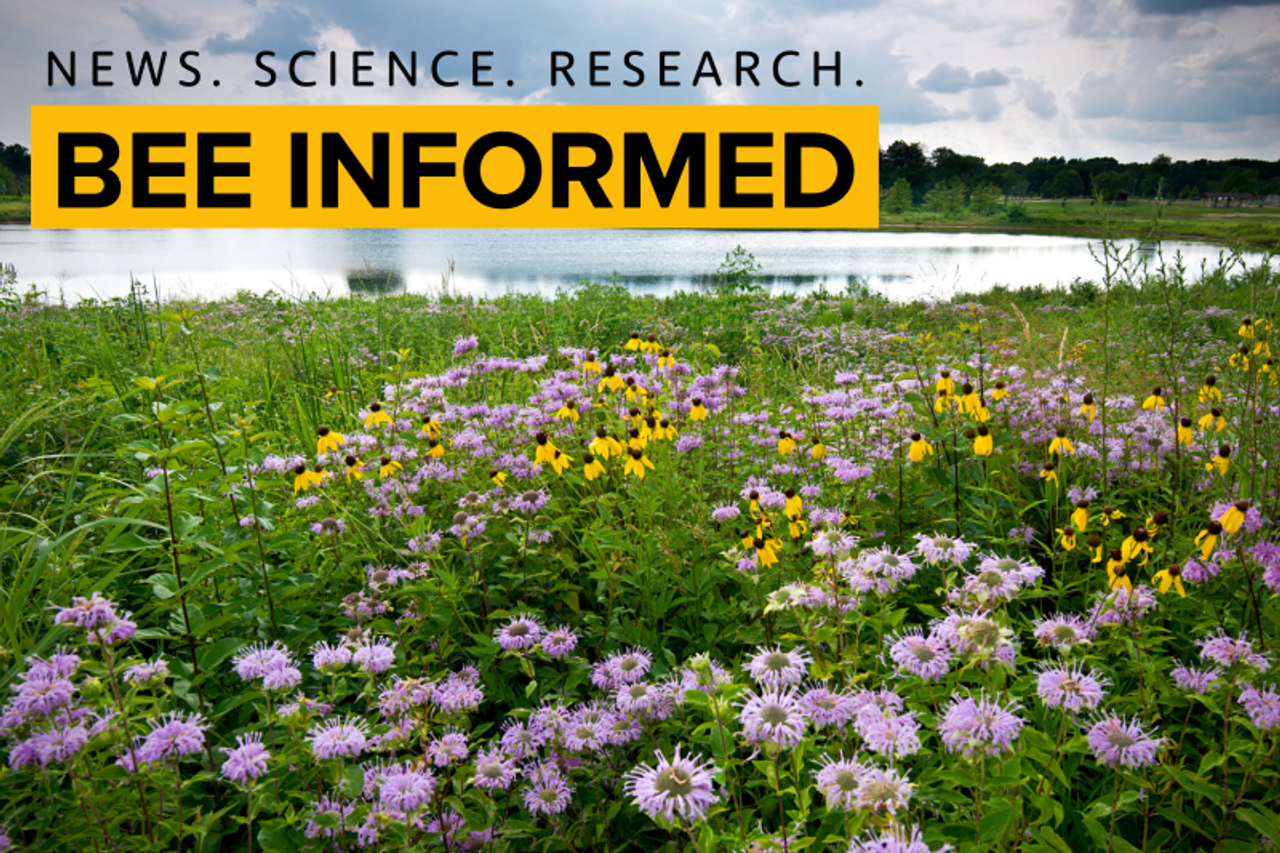
Each month our Bee Informed Blog highlights current news, science, and research related to solitary bee conservation, food insecurity, and sustainability.
1. "New unusual bee species discovered with dog-like snout"
(Phys.org) A new native bee species with a dog-like "snout" has been discovered in Perth bushland though Curtin-led research that sheds new light on our most important pollinators.
Published in the Journal of Hymenoptera Research, author Dr. Kit Prendergast, from the Curtin School of Molecular and Life Sciences, has named the new species after her pet dog Zephyr after noticing a protruding part of the insect's face looked similar to a dog's snout, and to acknowledge the role her dog played in providing emotional support during her Ph.D. Continue reading...

2. "Native voices were finally heard at California’s biggest native plant conference"
(L.A. Times) “There’s a growing understanding that the 20th century conservation movement is the byproduct of colonialism — that idea that humans created the problems in nature so nature has to be protected from humans,” O’Keeffe said after the conference. “But that mental model is changing. There are people across the world giving voice to the intersection of humans and nature, how we have to think about protecting ourselves and nature together, because we are in this together.” Continue reading...

3. Bee Basics: An Introduction to Our Native Bees
(Wired.com) When the Town Mouse visited the Country Mouse, the old fable goes, she politely ate her host’s simple food. But when the pair ventured to the city for the delights of urban life, the Country Mouse quickly fled back home to escape cats and other dangers. The country may be simple, the rodent realized, but at least it’s safe.
Try telling that to the bees. For these pollinators, that urban-rural dynamic has in many ways flipped: With the spread of industrialized agriculture, monocrops like wheat and corn have replaced forests of diverse flowering plants, obliterating bees’ food source. Agriculture has also brought clouds of pesticides that are killing bees en masse. But oddly enough, urban gardens—where different crops can grow next to each other, since they’re tended by hand rather than by giant, lumbering machines—are increasingly providing bees with sustenance. A growing body of research is showing that bee diversity in cities can actually be much larger than in surrounding rural areas. Continue reading...

To stay up-to-date on bee-raising tips and reminders, events, pollinator research, and sustainability insights, sign up for our monthly BeeMail newsletter and follow us on social media!